Authoured by Manu Moudgil
In August this year, the Punjab Pollution Control Board (PPCB) filed a criminal case against the mayor, commissioner and four other officials of the Municipal Corporation of Ludhiana, a large industrial hub in the northern state of Punjab. The charge was non-compliance of environmental laws in operating sewage treatment plants (STPs).
The case highlighted the gravity of the environmental problem that’s taken over Ludhiana. But it was not the first time that the samples at the STPs had failed quality checks. Nor is Ludhiana unfamiliar to pollution. Pollution, especially water pollution, has been plaguing the industrial hub for years now and it earned the tag of one of the critically polluted areas of India way back in 2010. The PPCB’s action is part of recent heightened activity on monitoring water pollution in Punjab. Its genesis was an order from the National Green Tribunal (NGT) on November 14 last year, 2018, where the tribunal imposed a fine of half a billion rupees (Rs. 50 crore) on the state government for polluting rivers Sutlej and Beas.
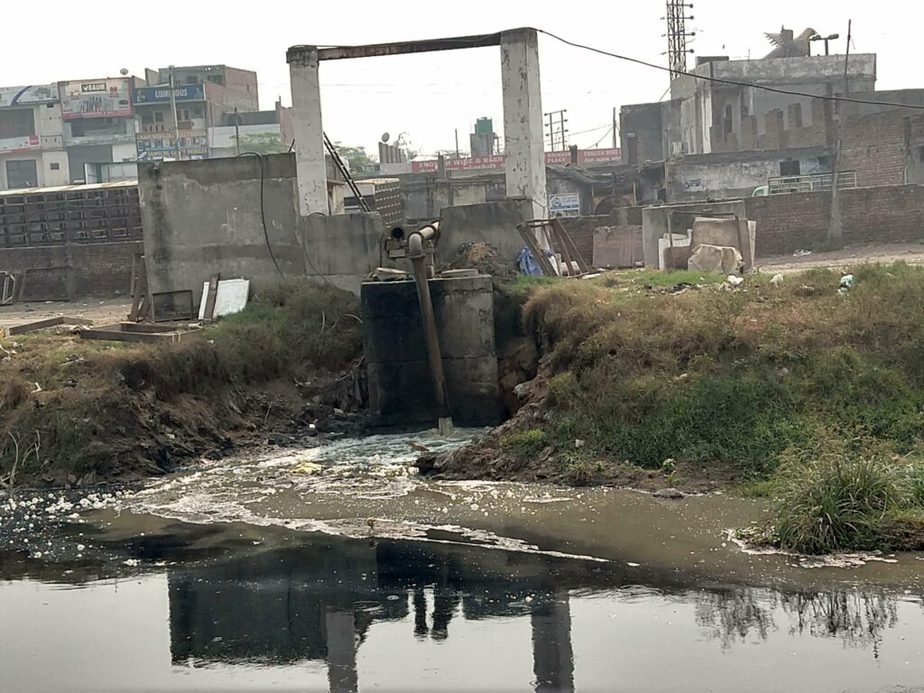
At that time, NGT had been hearing a bunch of petitions, including one by an activist from the neighbouring state of Rajasthan, who claimed that polluted river water from Punjab was being supplied to Rajasthan through canals, resulting in life-threatening diseases like cancer, kidney failure and hepatitis. The tribunal also formed a monitoring committee which has been tracking action on the ground, fixing responsibilities of officials and submitting its findings during the ongoing NGT hearings.
Sutlej, one of the five rivers that flow through Punjab, is the most polluted river in the state and city of Ludhiana is the biggest source of pollution in its catchment. As the largest urban habitation and business powerhouse of the state, Ludhiana conveys around 764 million litre per day (MLD) of its industrial and domestic sewage to the river through Buddha Nullah, which was earlier a fresh water stream, Buddha Dariya. Of the 2,423 industrial units in Punjab polluting the Sutlej, 2,028 are in Ludhiana, according to the Punjab government’s Clean River Sutlej 2019 action plan.
Move slider to view change in built up area of Ludhiana and around Buddha Nullah from 1984 to 2018. Made with Knightlab’s Juxtapose tool.
The testing of river water showed that it remains Class C before point of confluence with Buddha Nullah. Class C means it can be used for drinking with conventional treatment followed by disinfection. Downstream of the confluence, however, the water deteriorates to worst possible quality of Class E, which is fit only for irrigation, industrial cooling and controlled disposal. Several studies over the years have found heavy metals, chemicals and organic compounds in the water that is supplied to households in south Punjab and Rajasthan.
Ludhiana’s pollution emergency escalated with court order a decade ago
On November 9, 2004, the then Chief Justice of Punjab and Haryana High Court, Ranjan Gogoi, received an unusual letter. Nirbhai Singh, a prisoner of Central Jail, Ludhiana, complained that black smoke from dyeing factories nearby engulfs the jail after 5 pm, turning the barracks into gas chambers. Prisoners suffer from incessant cough and itching in their eyes every night. Upon inquiry by court, the dyeing industry claimed innocence and alleged that the air pollution in the jail is infact from the city’s garbage that is dumped on the banks of Buddha Nullah near the factories, and set on fire.
As the court was taking cognisance of the incident, more reports started coming from Ludhiana. A series of articles by regional newspaper, The Tribune, highlighted how Buddha Nullah gets around 300,000 (3 lakh) tonnes of untreated sewage and 60,000 cubic metres of industrial effluent discharge daily, comprising poisonous heavy metals like arsenic, chemicals like cyanide, harmful pesticides and toxic organic compounds. Scientists and doctors provided evidence, including cases of chronic lead poisoning, that a health emergency was unfolding in the city. Ludhiana had expanded exponentially but had no waste management plan.
Soon, two petitions were filed by the dyeing industry pleading its right to operate and seeking funds for effluent treatment. The court bunched the cases and formed an expert committee to identify the problem areas. Dyeing units were found to discharge maximum industrial effluents, electroplating industry was responsible for the hazardous metal waste, while residential and dairy sectors made the bulk of sewage and solid waste.
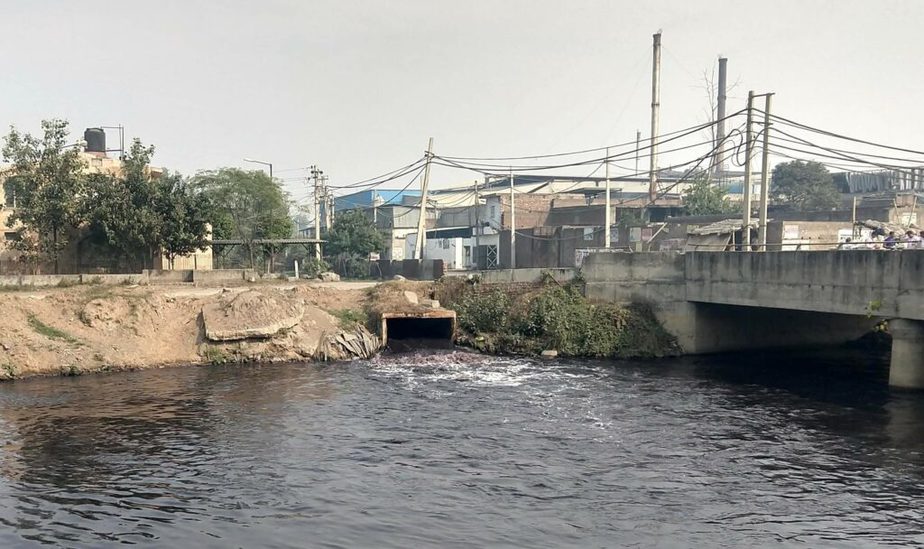
By the time the court closed the case five years later, in 2009, three STPs for sewage and a common effluent treatment plant (CETP) for electroplating industry were set up while a biogas plant was proposed for the dairy sector.
However, with another 10 years having passed, the pollution persists. Rise in population, expansion in built up area and failure of most measures that were put in place for waste management, compounded the problem.
“The only good thing that happened after the court order was proper disposal of hazardous waste coming from electroplating units to some extent. The waste was not huge but needed urgent attention,” says Jaskirat Singh, a city resident and member of Naroya Punjab, an umbrella group of organisations campaigning for clean environment. “At all other levels, the proposed solutions have either not been implemented or they don’t work efficiently.”
STPs not capable of treating overload of sewage
Today, Ludhiana has five sewage treatment plants with a total capacity of treating 466 MLD of sewage, while the city generates over 700 MLD of sewage Additionally, these plants don’t function regularly due to technical (equipment damage) and financial (high operation cost) reasons. Industries discharge their untreated effluent directly into municipal sewers, not only overloading the sewers but also damaging equipment at STPs.
The Central Pollution Control Board (CPCB) has notified quality standards for release of industrial effluents into public sewers. Lately, the board has been persuading water polluting industries to set up common effluent treatment plants and aim for zero liquid discharge by reusing or recycling the effluents.
Several sewage outlets open directly into the nullah. “During monsoon, these outlets get blocked and the sewage pushes back, flooding the streets,” says Yash Dogra, a resident of Kirpal Nagar.
Solid waste generated by households and dairy sector continue to choke Buddha Nullah. The municipal corporation desilts the stream regularly but more garbage appears in next few weeks. “Until the source of pollution is controlled, the stream will remain polluted,” says Pooja Rani who runs a small grocery shop at Shivpuri colony on banks of Buddha Nullah. “When there is excess water during monsoon, water comes out to the streets which is why locals dump soil on its banks every year. We are used to living with the stink. Diseases like skin allergies and malaria are regular here.”
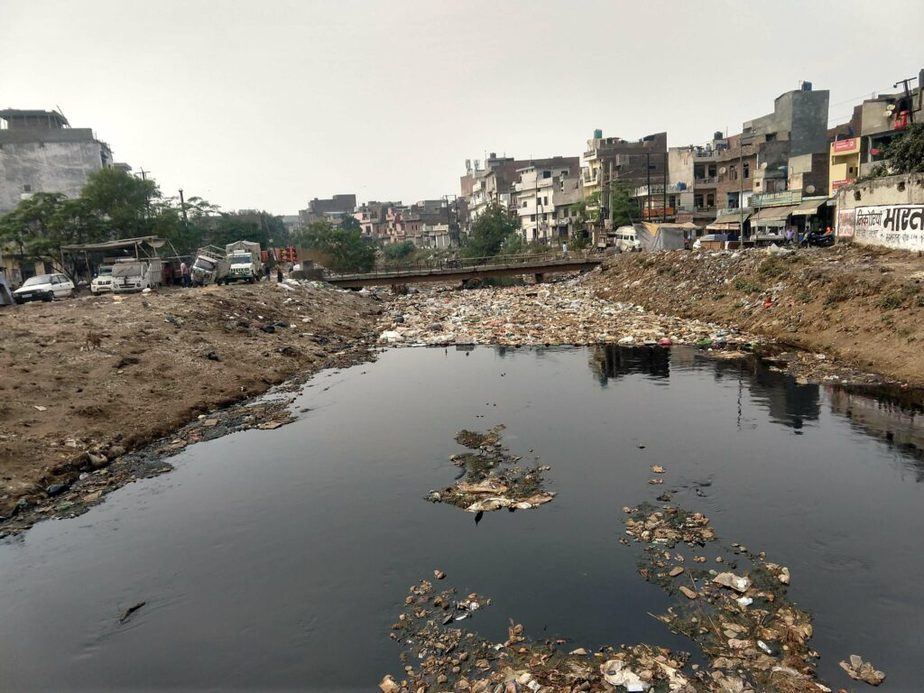
The state and centre government have already spent around Rs. 5.5 billion (Rs. 550 crores) on the cleaning of Buddha Nullah. Ludhiana Municipal Corporation has also been earmarking funds over the years for its clean up. As per the financial statements of the Ludhiana Municipal Corporation, in 2016-17, Rs. 6.3 million (63,17,534) were spent in the cleaning of Buddha Nullah while around Rs. 78.5 million and Rs. 15 million were spent in 2015-16 and 2014-15 respectively.
Distant voices of victims
Manewal village, around 20 kms aerial distance from Ludhiana, gains nothing from its proximity to the business hub. But it bears the brunt of the pollution that the city has been releasing to its surrounding villages.
A small habitation of around 400 families, Manewal is where the city’s polluted waters merge into Sutlej. Landholdings are small and most villagers work as farm labourers besides rearing animals.
The sewage from Ludhiana pollutes groundwater in Manewal and leads to diseases in the people and livestock. The authorities of the village are frustrated. “So many politicians, officers and mediapersons have visited us. Scientists take water and soil samples but no real solution is provided,” says 66-year-old Kartar Singh, a resident of Manewal. “There was a time when people from far off used to come to take a dip in Buddha Dariya as its water was supposed to cure diseases. Today, it’s the opposite.” Skin and hair diseases and hepatitis are common ailments in the village.
Being close to the river, groundwater can be accessed at 50 feet but it is not of good quality. “The water is always foaming. The crop yield we get is around 10 quintal per acre less than other areas,” says Gurmeet Singh, who owns land in Manewal. “I have installed a submersible motor pump now with the hope that water is of better quality at greater depth.”
The contamination also affects livestock usually reared on groundwater. “Many a times, buffaloes are not able to bear calves. The milk yield we get is half that of other villages,” says the village sarpanch Shivinderpal Singh.
A 2016 study done by researchers at Guru Angad Dev Veterinary and Animal Sciences University had found oxidative damage among cows bred on fodder irrigated with sewage water from Buddha Nullah. Oxidative damage can lead to decreased reproductive and productive performances. The mean levels of heavy metals like lead, cadmium, arsenic and nickel were found to be above the normal limits in tested cows.
Another study done by the zoology department of Punjab Agricultural University found that the fish collected from Sutlej downstream of Buddha Nullah had significantly higher damage to their gills and liver as compared to fish from around 2-5 km upstream where the water is less polluted.
Sutlej meets Beas river at Harike near the India-Pakistan border. From there, the water is diverted towards Rajasthan and south Punjab through canals. Both regions are plagued with high incidences of cancer, genetic diseases among children and other chronic ailments.
“We use the canal water for all purposes from drinking to irrigation. Cancer, hepatitis, and kidney diseases are very high in our region,” says Mahesh Pediwal of Tapovan Trust, a Rajasthan-based organisation campaigning for clean water.
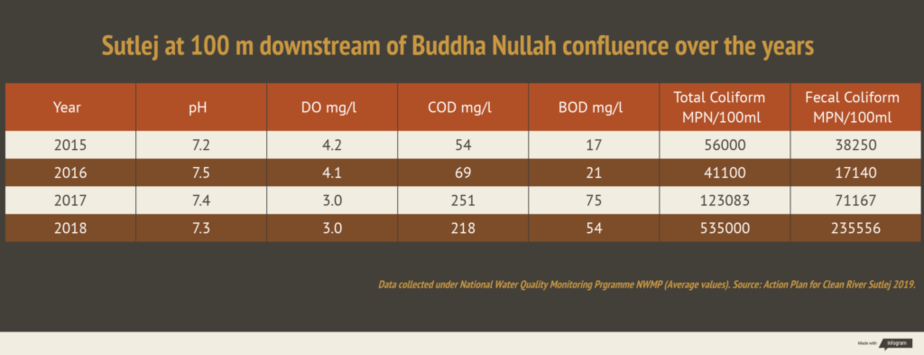
The new action plans
The recent intervention by NGT, fixing responsibilities of officials and departments, has again pushed the authorities to come up with solutions. One of the proposals is to release around 200 cubic feet per second (cusecs) of fresh water from Sirhind canal into Buddha Nullah to dilute its pollutants.
Work is also on to upgrade an existing 48 MLD STP and three CETPs of total 105 MLD capacity for dyeing units. Negotiations are on for shifting of the dairies out of city limits.
The high cost of maintenance and operation of treatment plants, however, is a dampener and Punjab has been seeking assistance from the Centre to deal with river pollution.
“The cost of operating a sewage treatment plant comes to around Rs. 7 lakh (Rs. 700,000) per MLD per year, besides pumping cost and other expenses. While for initial capital, 33 percent funding will come from the Centre under AMRUT scheme, rest of the capital as well operating cost will be borne by the state government and municipal corporation,” says Ajoy Sharma, Chief Executive Officer, Punjab State Water Supply and Sewerage Board and Secretary (local government). “Operating cost for treatment plants, pumping stations and sewer network will be around Rs. 100 crore (Rs. 1 billion) per year for 700 MLD of sewage.”
Ludhiana city mayor Balkar Sandhu, one of the co-accused in the case filed by Punjab Pollution Control Board for non-operational STPs, is out on bail. He says the plants don’t function because of the high cost, but he is hopeful. “The monthly electricity bill for STPs come to Rs 1.5 crore (Rs. 15 million), which is too high for a municipal corporation to bear. I am sure with the new action plan, we will have enough funds especially because Ludhiana generates so much revenue,” he adds.
The three common effluent treatment plants (CETPs) for dyeing industry will be managed by the Dyeing Manufacturers’ Association. “All the dyeing units will get meters installed at their outlets and pay the monthly bill based on water sent for treatment,” says Ashok Makkar, president of Dyeing Manufacturers’ Association. “Other small-scale, scattered units will have to install their own effluent treatment systems.”
From Punjab and Haryana High Court in 2009 to NGT in 2019, the issue of Ludhiana’s pollution has come full circle with slew of new solutions proposed. The environmental consciousness is higher this time around but so is the cost of proposed solutions which may turn them unsustainable.
Alternative methods of domestic sewage treatment which can bring down costs are yet to be explored by the state. Decentralised wastewater treatment systems (DEWATS), which can be installed in neighbourhoods, do not need a large sewerage network and consume less energy. A 8-10 kilo liter per day capacity of a DEWATS plant costs around Rs. 250,000-300,000 for construction and annual operation and maintenance cost comes to Rs. 3,000-5,000. Bio remediation, initiated by the Delhi government, which involves use of vegetation to create an artificial wetland ecosystem for sewage treatment, has been found to bring good results, if maintained properly. For bioremediation, the capital cost comes to Rs. 38,000 per acre and annual operations and maintenance cost is Rs 280,000 (2.8 lakh) per acre.
This piece is co-published by The Bastion and Mongabay-India


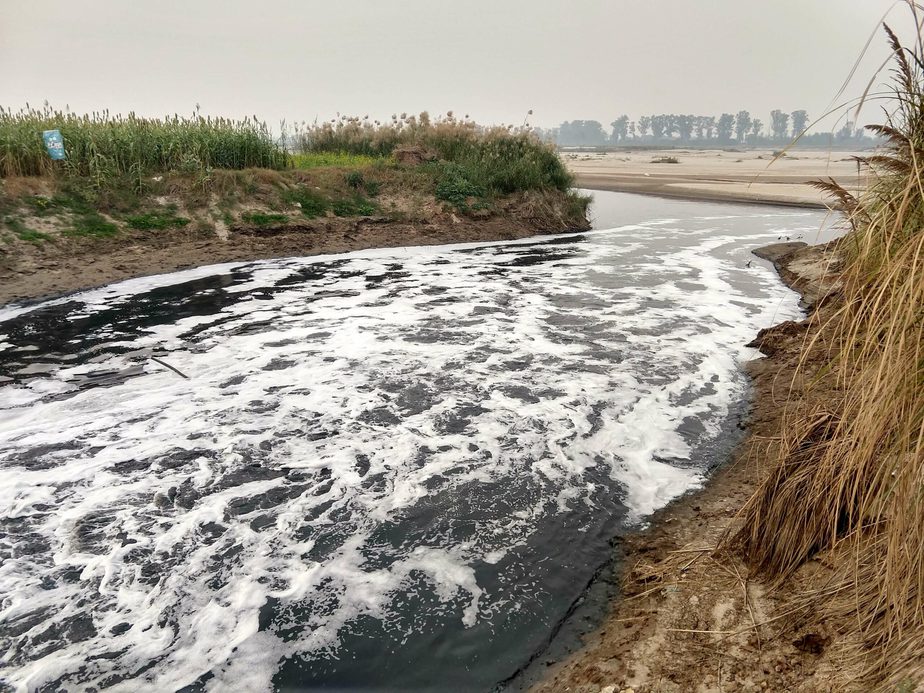




[…] This story is co-published by Mongabay-India and The Bastion. […]